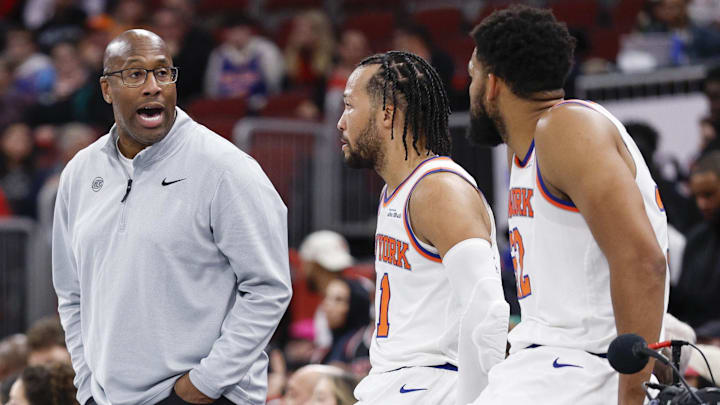Mike Brown promised many things upon joining the New York Knicks. From more three-pointers and a faster pace to deeper rotations and five-out spacing, he set clear expectations for how this team will operate. His most ambitious, not to mention riskiest, goal: injecting more ball movement into the offense.
Mission accomplished.
After throwing 281.2 passes per game last year, the Knicks are tossing 315.6 this season—the fifth most in the league, and a 12 percent increase in overall volume from 2024-25.
Knicks passes per game:
— New York Basketball (@NBA_NewYork) November 4, 2025
🍽️ 2020-1: 276.2 (23rd in NBA)
🍽️ 2021-2: 279.0 (20th in NBA)
🍽️ 2022-3: 273.5 (22nd in NBA)
🍽️ 2023-4: 283.4 (14th in NBA)
🍽️ 2024-5: 281.2 (18th in NBA)
🍽️ 2025-6: 315.6 (5th in NBA) pic.twitter.com/wCSTijv71s
Featuring so much more ball movement is a huge deal. The Knicks are still trying to master a new offense, and rank only 13th in points scored per possession at the moment. Early on, though, process is just as important as raw results. And nothing says more about New York’s commitment to reinventing itself than the successful implementation of its toughest new wrinkle.
New York’s roster is not chock full of established passers
Driving up three-point volume never loomed as a bold proclamation. The same goes for playing at a faster clip. Anyone who thought Jalen Brunson was incapable of adapting to a quicker or more hybrid style was flat-out wrong.
Ball movement is a different story. The Knicks are not teeming with intuitive playmakers. Their best passer is Tyler Kolek, who doesn’t really play. Their second-best passer is Brunson, the engine of the offense.
The pecking order gets dicey after him. Mikal Bridges, OG Anunoby, Josh Hart, Karl-Anthony Towns, and Jordan Clarkson have all provided glimpses into secondary-playmaker chops. But these flashes invariably flicker out. That’s why the absence of a proven floor general behind Brunson has received so much attention.
While it may be too early to discard that concern altogether, the Knicks are so far assuaging the most extreme cases of anxiety.
The Knicks are starting to get the hang of this ball-movement thing
Pretty much everyone is getting off the ball quicker when New York gets into its offense. The additional body movement around the court organically begets more passing.
Above all, though, the Knicks have given virtually every player more of a license to dribble the ball up the floor.
No one drives this home harder than Bridges. His playmaking has been a revelation to start the year. He’s averaging 52.5 passes per 36 minutes of court time, up from 35.7 last season. That is…basically a 50 percent increase in his passing volume.
It’s a similar story for OG Anunoby. He’s averaging more potential assists per game (4.6) than he did last year (3.5), despite playing fewer minutes. Karl-Anthony Towns has struggled to be more of a facilitator early on, but he already looks more comfortable getting rid of the ball from the top of the key, and running hand-offs.
There is still room for the Knicks to grow
Granted, the Knicks’ implementation of this new ball-movement model isn’t perfect. They are not playing as fast as Brown probably wants them to—particularly after the opponent makes.
A lot of their core tenets also go out the window during fourth quarters. About 60.9 percent of their made buckets are coming off assists in the final frame. That’s hardly a whisper more than the 60 percent assist rate they posted in 2024-25.
Crunch-time progression will be the biggest litmus test. Only the Sacramento Kings and Portland Trail Blazers relied on self-created buckets more often during clutch play last year. The Knicks have resorted to familiar patterns down the stretch this season, but have not logged nearly enough high-leverage minutes to draw any sweeping conclusions. And even if we tried to, the takeaway will favor change. Every single basket New York has made during its five whole minutes clutch play this year has come off an assist.
It remains to be seen how high the Knicks’ offense will climb while incorporating all of its new principles. But if the way they’ve been able to inflate ball movement—without turning into a turnover machine—is any indication, they’re not even close to scratching the surface of their ceiling.
